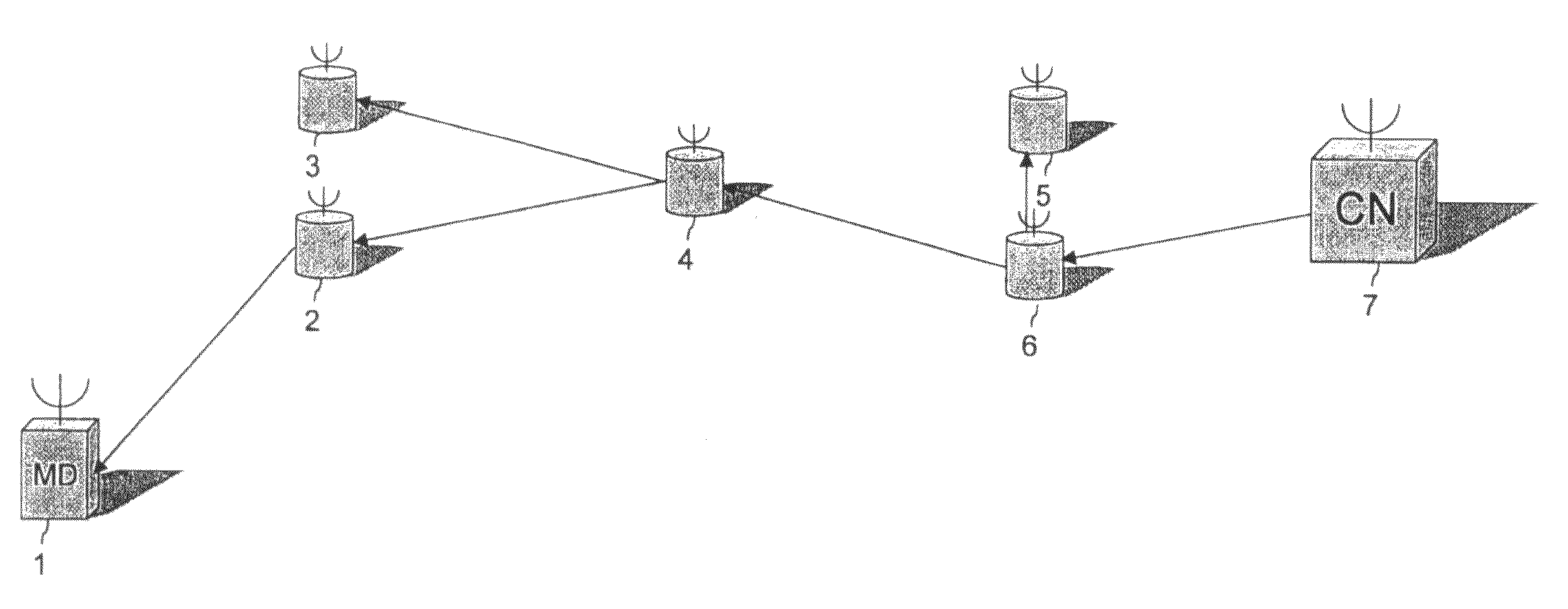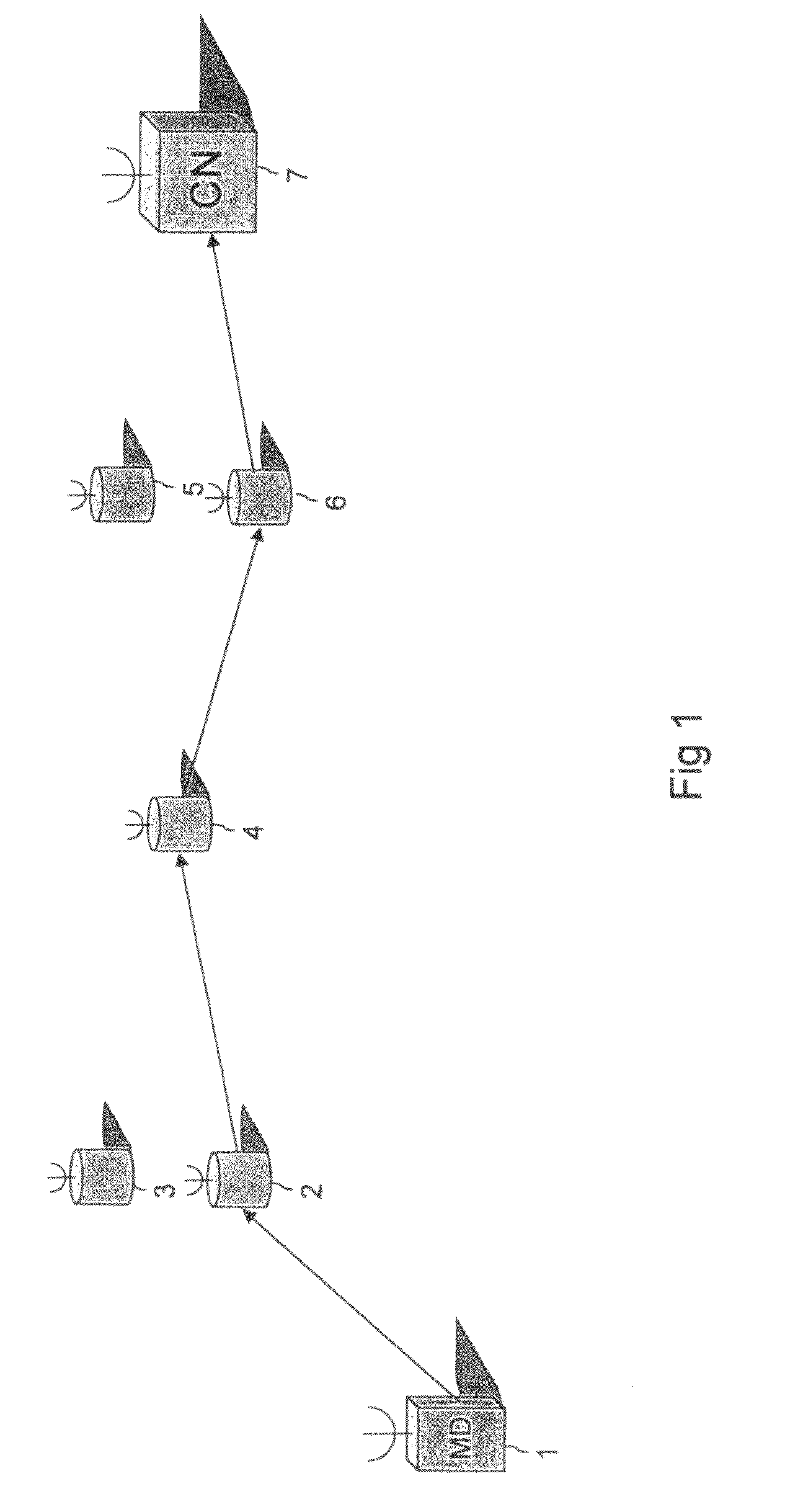Telecommunications system and method
a technology applied in the field of telecommunications system and transmission system, can solve the problem of low achieve the effect of reducing power consumption, reducing complexity and cost of transceiver units, and reducing power consumption of repeater nodes
- Summary
- Abstract
- Description
- Claims
- Application Information
AI Technical Summary
Benefits of technology
Problems solved by technology
Method used
Image
Examples
Embodiment Construction
[0021]FIG. 1 provides a diagram of a simplified network according to an embodiment of the present invention. A mobile device 1 communicates data to and from a control node 7 via a plurality of repeater nodes 2, 3, 4, 5, 6. In some embodiments of the invention disclosed in co-pending UK application number 0707924.7, the repeater nodes and the control node 7 form part of a self organising ad-hoc network. When the network is first established each repeater node is operable to identify a parent repeater node that is within a communication range and disposed between it and the control node 7. When the network is operational, the repeater node transmits upstream data to the parent repeater node. Furthermore, as will be discussed below, the mobile device 1 is operable to select a repeater node within a communication range and transmit upstream data to that selected repeater node. The selected repeater node then transmits the data it has received from the mobile device to its parent repeate...
PUM
 Login to View More
Login to View More Abstract
Description
Claims
Application Information
 Login to View More
Login to View More - R&D
- Intellectual Property
- Life Sciences
- Materials
- Tech Scout
- Unparalleled Data Quality
- Higher Quality Content
- 60% Fewer Hallucinations
Browse by: Latest US Patents, China's latest patents, Technical Efficacy Thesaurus, Application Domain, Technology Topic, Popular Technical Reports.
© 2025 PatSnap. All rights reserved.Legal|Privacy policy|Modern Slavery Act Transparency Statement|Sitemap|About US| Contact US: help@patsnap.com



